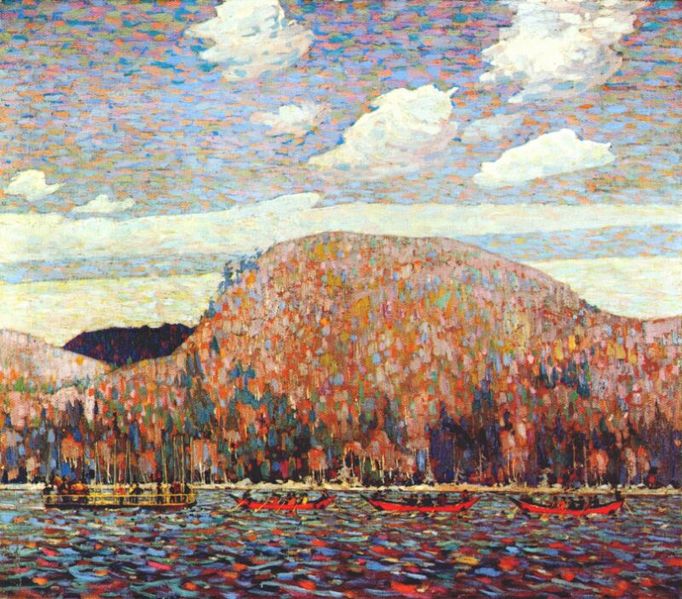One of the most enduring mysteries in Canadian art is closer to a solution, after some archaeological detective work by a team associated with U of T. Tom Thomson died and was buried in Algonquin Park in 1917, shortly after completing two of his greatest canvases, but until recently nobody had been sure of his last resting place.
His remains were supposedly exhumed and reburied at Leith, Ontario, shortly after his death, but new evidence suggests that they remain where they were first buried – at Canoe Lake. The mystery hangs on a skeleton found at the lake in 1956. Government experts of the day said it was an aboriginal person’s, but a local doctor who examined the skeleton thought it was Thomson’s.
Journalist Roy MacGregor, author of a new book about the Group of Seven artist, sought an additional opinion about the skeleton’s origins. He sent photos of the skull to Ron Williamson, an anthropology professor and managing partner of Archaeological Services Inc. Based on the skull’s morphology and the number of cranial features, Williamson concluded that it was probably Caucasian. An expert on his staff confirmed his view, adding middle-aged and male.
For further confirmation, Williamson sent the photos to Susan Pfeiffer, a professor of anthropology and an expert in human remains. Pfeiffer identified the skull as belonging to a middle-aged male, roughly 50, of northern European background, “let’s say Scottish,” who died within the past century.
Andrew Riddle, a U of T grad who now works with Williamson, compared the photos of the skull to those of Thomson. Using photogrammetric analysis, he concluded that there was nothing to suggest the skull belonged to anyone but Thomson. A forensic artist then drew an impression of the missing man, based on the skull, and Williamson almost fell out of his chair. “What she sent me could easily have been taken as a twin of Thomson.”
Nothing short of DNA analysis can confirm the identity of the remains, but, as Williamson says, the evidence is pretty convincing.
Recent Posts
U of T’s Feminist Sports Club Is Here to Bend the Rules
The group invites non-athletes to try their hand at games like dodgeball and basketball in a fun – and distinctly supportive – atmosphere
From Mental Health Studies to Michelin Guide
U of T Scarborough alum Ambica Jain’s unexpected path to restaurant success
A Blueprint for Global Prosperity
Researchers across U of T are banding together to help the United Nations meet its 17 sustainable development goals







2 Responses to “ Body Double ”
I enjoyed the article, but wish to correct an error. Tom Thomson was not a Group of Seven artist. The original members named themselves “The Group of Seven” in 1920, three years after Thomson died. Although he worked closely with the seven artists during his lifetime and doubtless would have been number eight had he lived, he was not part of the original group.
Eileen Prettyman
BA 1948 Victoria
Toronto
The headline states: "A U of T team finally settles the question of where Tom Thomson was buried." [my italics]
The last paragraph of the article: " Nothing short of DNA analysis can confirm the identity..." [my italics]
It seems that several different people wrote this article. Roy's book on Tom Thomson was an outstanding piece of research but it only narrowed the search for the final resting place of our greatest artist.
Douglas Auld
MA 1965